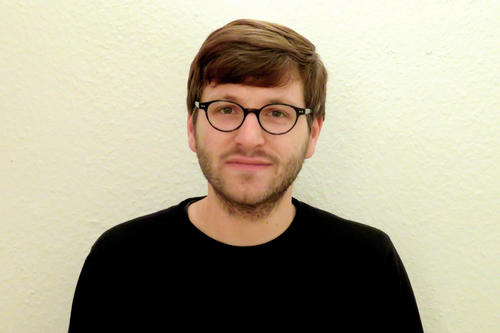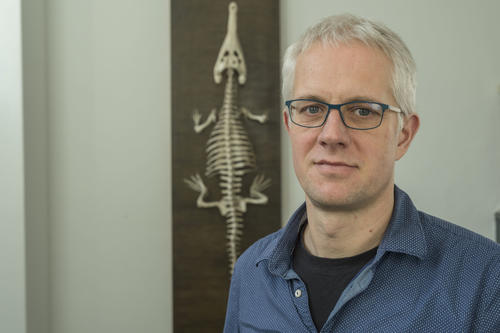When Research Findings Are Used to Develop Weapons
Biology professor Jens Rolff and peace and conflict researcher David Niebauer on the ambivalence of science
Jan 11, 2022
Between benefit and harm: How do scientists take into account the possibility that their research might not only be used for socially useful goals?
Image Credit: shutterstock-329644514
Professor Rolff, Mr Niebauer, you did not have to go far to find material illustrating the issue of ambivalence in science.
ROLFF: Yes, here on our campus in Dahlem there is an astonishing amount of historical basic research of global importance that has dual benefits. What comes to mind first is nuclear fission, which Otto Hahn carried out experimentally for the first time in 1938 in cooperation with Lise Meitner.
A second example is the nitrogen chemistry performed by Fritz Haber. It led to the development of nitrogen fertilizer, which made an enormous contribution to world nutrition. In 1918 Haber was awarded the Nobel Prize in chemistry for his work in this field.
The downside is its use as an explosive. Research at Haber's institute also went into the production of poisonous gases and pesticides that were used in the Holocaust.
Our campus is extremely important for the history of science. I think we should use this history as a starting point to address a topic that affects all possible areas of research today.
NIEBAUER: We organized a series of public lectures for this semester, which on the one hand deals with how we can appropriately remember these discoveries and developments. On the other hand, it considers what lessons we want to draw for the present and the future.
For all of us who work here in Dahlem, there should be a requirement to consider how we can conduct research ethically and what responsibility we as scholars and scientists have toward society.
David Niebauer is a researcher in the Peace and Conflict Studies Unit at the Otto Suhr Institute of Political Science. He is a member of the Dual Use Working Group.
Image Credit: Personal collection
I take it you are not referring to questionable, dangerous research, for example, on weapons technology, but – three steps earlier – basic research, which is then later used for destructive applications. Is that correct?
ROLFF: Yes. A recent example of this was pointed out by Johannes Fritsch from the National Academy of Sciences Leopoldina in the first lecture in the series. He described how knowledge from behavioral research about swarm formation, i.e., how schools of birds or fish move, is utilized for designing combat drones. Nobody in behavioral research ever expected their work to be used this way in weapons technology.
Is the phenomenon growing in importance? Are new areas of science such as nanotechnology, genetics, and artificial intelligence more dangerous than previous research?
ROLFF: It is difficult to say that the potential for harm in science is greater today than it used to be when you think of nuclear research and the atomic bomb. However, it seems to me that researchers are becoming increasingly aware that their research can also be misused. There is more discussion about the dual use a research area might have.
NIEBAUER: I think that these issues have always been part of science and research. Some of our examples are older, such as the research on nitrogen or nuclear research, but there are always new areas of science where these aspects need to be taken into consideration.
Biologist Jens Rolff is a member of the Dual Use Working Group at Freie Universität Berlin.
Image Credit: Bernd Wannenmacher
Are there any areas in basic research where you would say: Here research should be limited from the beginning?
NIEBAUER: It should never be left to individuals to decide which research should not be carried out in the first place. That should always be addressed through an internal scientific, interdisciplinary debate as well as by a discussion within society as a whole.
ROLFF: It is very difficult to predict which knowledge can be used negatively, as the example of schools of fish shows. There have long been discussions about whether it is ethically justifiable, for example, to make viruses in the laboratory more dangerous than they are ...
... a highly topical example, the so-called “gain of function” research.
ROLFF: The idea behind that type of research is to prepare for the eventuality that nature makes the virus more dangerous. But that is not basic research in the sense of pure, curiosity-driven science. With regard to the latter, I would say that there are few areas where you can say in advance that such research should not be undertaken. Rather, it is important to recognize what harm and what benefit the research findings might lead to and then take precautions so that they are not used destructively.
On December 16 the lecture series hosted a conversation between the virologist Christian Drosten from Charité – Universitätsmedizin Berlin and the RBB science journalist Julia Vismann.
ROLFF: Yes, the main subject was science communication, above all, how we deal with open science and the publication of scientific findings, for example on pre-print servers, since this involves a risk that research results might be misused or misunderstood. Unfortunately, this has occurred more than once in the coronavirus pandemic.
Pepe Egger conducted the interview. It originally appeared in German on December 4, 2021, in the Tagesspiegel newspaper supplement published by Freie Universität Berlin.
Further Information
- David Niebauer, M.A., Freie Universität Berlin, Otto Suhr Institute of Political Science, Research Unit Peace and Conflict Studies, Email: david.niebauer@fu-berlin.de
- Prof. Dr. Jens Rolff, Freie Universität Berlin, Institute of Biology, Zoology, Email: jens.rolff [at] fu-berlin [dot] de



